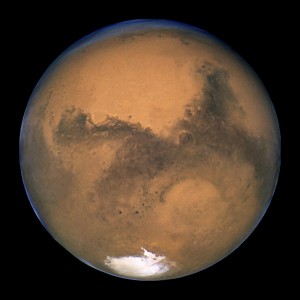The Mars Anomaly

The presence of water isn’t the only Mars mystery scientists are keen to probe. Another centers around a seemingly trivial characteristic of the Red Planet: its size. Classic models of solar system formation predict that the girth of rocky worlds should grow with their distance from the sun. Venus and Earth, for example, should exceed Mercury, which they do. Mars should at least match Earth, which it doesn’t. The diameter of the Red Planet is little more than half that of Earth.
We still don’t understand why Mars is so small,” says astronomer Anders Johansen, who builds computational models of planet formation at Lund University in Sweden. “It’s a really compelling question that drives a lot of new theories.”
Understanding the planet’s diminutive size is key to knowing how the entire solar system formed. And that’s where the trouble begins. Despite decades of debate, data, and computer simulations, until recently most models predicted that Mars should be many times its observed size. Getting Mars to form at the right place with the right size is a crucial part of any coherent explanation of the solar system’s evolution from a disk of gas and dust to its current configuration. In trying to do so, researchers have been forced to devise models that are more detailed—and even wilder—than any seen before.
Read more about this Martian mystery in my article from PNAS.